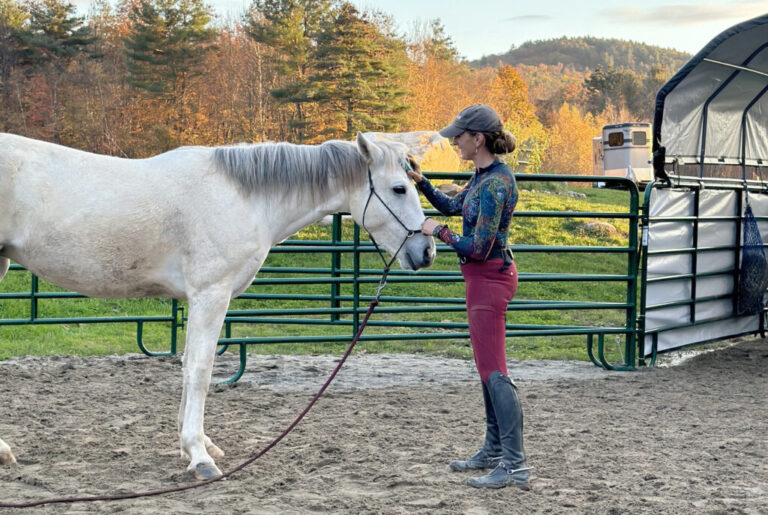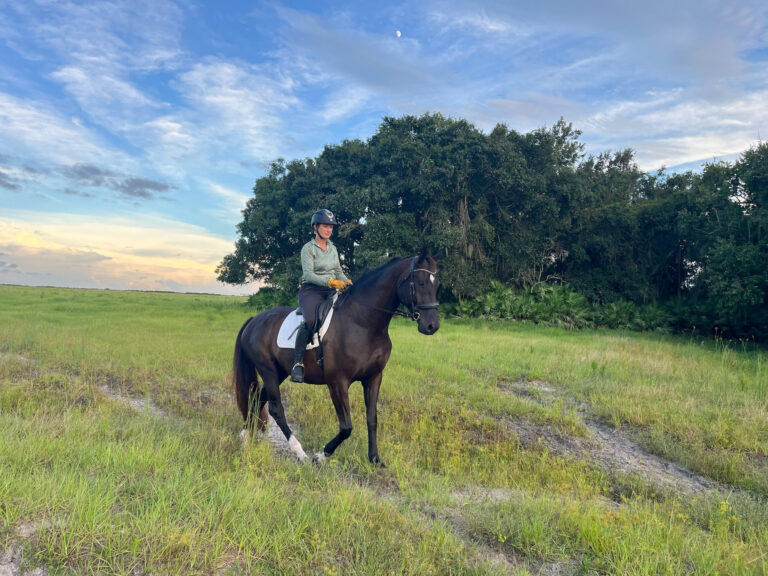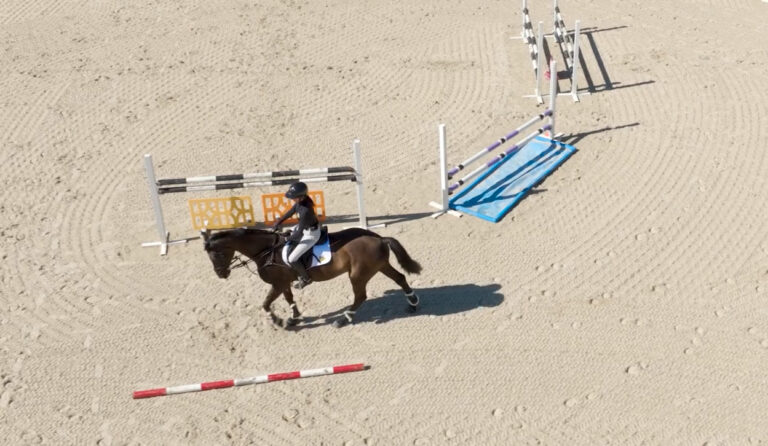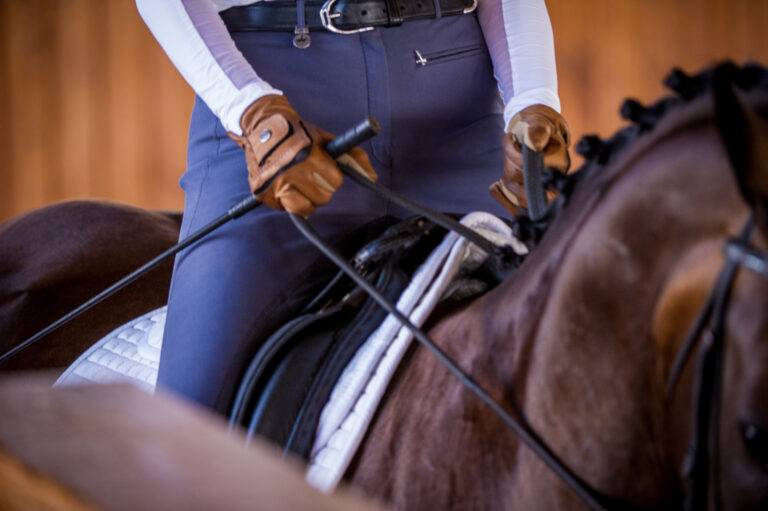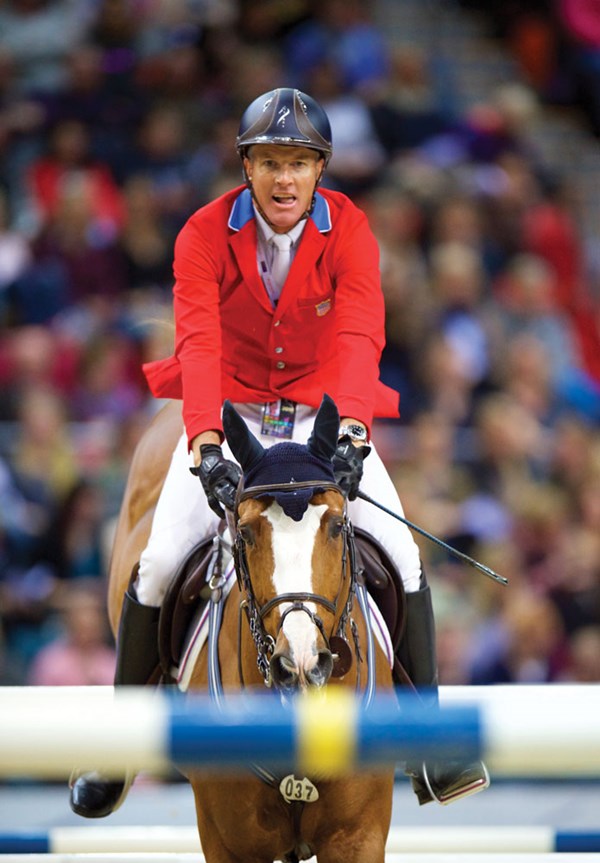
You have probably run across the magazine Real Simple at the very least in the checkout line at the grocery store. It’s full of organizational tips, streamlining life hacks and creative ideas to help you de-stress and de-clutter your life. It capitalizes on a truth that I think many of us subscribe to: the more straightforward, the better. This month we are creating an opportunity for you to do a similar de-cluttering on the overall focus you bring to your riding. How? By editing the type and amount of things you allow yourself to concentrate on at the barn or the horse show.
Here are the guidelines for your focus makeover: Factors like your attitude and preparation, which are in your control, are the items you keep. All of the items that are out of your control (for example, the weather or construction going on next to the outdoor ring) are the things you remove. It takes awareness and discipline to stay on top of these two categories, but the benefits of an enjoyable and productive experience with your horse are well worth it.
Rich Fellers: Keeping It Simple
Rich Fellers is a terrific example of the less-is-more philosophy. The concept of keeping it simple and controlling the controllable is one he takes to heart. There is no wasted effort or unnecessary fuss worrying about things that are out of his control, which has helped to create sustained excellence over a long career. Whether riding to the win at the 2012 FEI World Cup™ Jumping Final on the inimitable Flexible or jumping a young horse in a 1.30-meter class at the HITS Thermal Desert Circuit, Rich’s focus and consistency are admired by virtually everyone in the sport.
“I can remember back to when I used to get nervous about a triple bar or the first fence or a triple combination and that worry would get in my way,” Rich says. “You really can’t control what distance shows up when you are riding to a fence. You have to analyze what shows up and make it work. I’ve sorted things out over the years and I have simplified my whole perspective. [Now] I think about and focus on the things that I can control. I think that has helped my riding be more consistent.
“Staying on top of all of the details that you can control really leaves you no time to worry about the things that you cannot,” he continues. “How can I prepare myself [to handle] a new time zone, for example? I drink a lot of water when I fly, that’s a start. I stay up when I get into the new time zone, get good and tired, and then sleep when I am supposed to. … I always eat well. … I have a specific plan for when I want to get on my horse to warm up. I also want the horse riding super well on the flat before I ever head to a warm-up jump. [Those things are] all in my control.
“Winning a class or competition is not so much about the will to win or the desire. It’s about the execution. Put emphasis on what you can control and execute the best you can.”
Step 1: Understand What You Can Control
The starting point for directing your focus and energy appropriately is breaking apart what is in and out of your control. To enhance your understanding, it is helpful to make an absolute list of each (rather than cataloging what you can/can’t do right now). Take some time to examine the sport as a whole instead of your current capabilities.
For example, just because your adrenaline feels like something that rises up and takes over in certain situations, it does not mean that energy is something that belongs on your “out-of-control” list. Similarly, if you have a very talented and well-schooled horse, do not make the mistake of putting him or her on your “in-control” list. Horses are animals and as such, you influence them with your aids, training, etc., but you do not (nor ever will) fully control their actions.
A Brainstorming Exercise:
Take a piece of paper and draw a line lengthwise down the middle. On the left side of your page write “Out of Control” and on the right, “In Control”—this will set the framework for your task.
Out of Control: Ask yourself what things are always out of your (and everyone’s) control in equestrian sport. Think about lessons, trail rides, hacking, warm-up rings, horse shows and everything you can imagine. Examples include: spectators, your trainer’s mood, your horse’s performance, your family’s expectations, your score—keep going, there are a lot more!
In Your Control: As you think about this list, be sure to include both physical and mental factors. Remember, this is an absolute list and include everything that is appropriate even if you are still working on developing your control over it. Examples include: focus, cardio fitness, attitude, goals, horse’s care/preparation, nutrition, etc.
Step 2: Be Disciplined With Your Focus
Once you have a clear understanding of the things that are in and out of your control, you can make consistently productive choices with your concentration.
For example, they just moved your class to a ring that your horse has yet to be in at this show. Three things to note: 1) this is information you need to know, 2) it is out of your control and 3) being anxious about it is not a productive use of your energy and time. You need the awareness, but you need to spend only a tiny moment thinking about it. Getting caught up in a negative emotion such as frustration is a way that things outside of your influence can siphon your strength and make you less effective overall.
Therefore, let’s imagine that in this scenario your thought process went something like this: “They moved my class—ugh. What a bummer. OK, what can I do? I’m going to hand-walk my horse around that area to help him acclimate, watch some classes there so I see how the courses are riding and remind myself of all the aids I can use to keep his focus on me.” The phrase I want you to take careful note of is “What can I do?” That is the method by which you change gears quickly in order to keep your mind on the things you can do to respond to the situation to the best of your ability.
Develop your own method to change gears. “What can I do?” is but one suggestion to use when you find yourself getting stuck on a issue that is out of your control. The main idea is to be aware and prompt yourself to take immediate, positive action when necessary to keep your energy directed toward things in your control.
So when you go out to the barn these next few weeks, keep your awareness sharp and pay special attention to channeling your focus and effort productively. Your to-do list will hopefully feel much more straightforward and manageable now, allowing you to stay present, have fun and ride your best. Remember, all you ever have to do is control the controllable. Happy riding!
This article originally appeared in the July 2016 issue of Practical Horseman.





